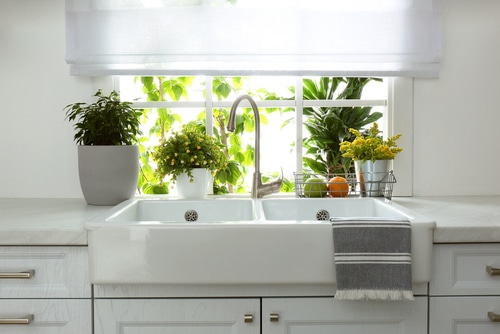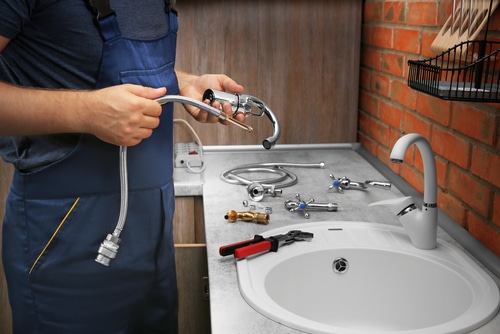Kitchen Sink: What Are the Parts & Are Drains Universal?
A kitchen sink contains several important components, and any of them could be the reason behind the problem with your sink. Sometimes, not even regular and adequate maintenance of your sink drain can prevent blockages from occurring and the only solution to your problem may be to completely replace your kitchen sink pipes.
That is why it is important to be familiar with all the parts of your kitchen sink. Although you might eventually have to contact a professional plumber in Chino to resolve your problem, it’s still good to know what component might be causing the problem.
 What are the parts of a kitchen sink?
What are the parts of a kitchen sink?
A kitchen sink, especially the part of it that’s below the surface, usually invisible to your eye, consists of many components. Let us take a look at the 12 most common parts that make up the majority of kitchen sinks:
- Basin: This is an essential and the most obvious part of a kitchen sink. It holds water and has a drain in the middle of it to allow water to leave.
- Faucet: Faucets are pieces of control equipment used for turning water on or off. It consists of a handle for controlling water pressure and piping that pours water into the basing. Taps are usually made from stainless steel.
- Sprayer: There are some kitchen sinks that have a sprayer installed for direct spray. Sprayers are useful for washing the dishes, and they are commonly located between the water supply and the faucet. You cannot use the tap and the sprayer at the same time.
- Countertop: The countertop serves as the working area around the sink and it can be made from a variety of materials, mainly marble, soapstone, and granite.
- Garbage disposer: The garbage disposer serves the purpose of pulverizing all food waste that goes down the drain of the kitchen sink, so it can safely wash down the waterlines.
- Trap: The trap is a section of the wastewater line specifically designed for preventing sewer gases from entering your home through your kitchen sink drain. Also, the trap can hold debris.
- Supply lines: The purpose of the supply lines is to transfer water to the faucet. A dual-handle sink is directly connected to the hot and cold water lines, while a single-handle sink has a valve that regulates water temperature.
- Rubber gasket: This component of your kitchen sink prevents water leakage in areas where two pieces of piping connect.
- Strainer: The strainer covers the drain hole in the middle of the kitchen sink. It prevents large pieces of food from entering the piping system, which can cause blockages.
- Faucet aerator: This is a very small mesh screen located at the very tip of the kitchen sink faucet and it regulates the flow of the water through the faucet.
- Compression coupling: These couplings joint two pipes together, and they are mostly used to connect the water supply to the faucet.
- Drain pipe: This is a critical component that transports dirty water out of your home.
 Are sink drains universal?
Are sink drains universal?
Kitchen sink drains have a universal diameter. It doesn’t matter if you’re using a double-basin sink, or a single-basin sink, the drain hole diameter is 3 and ½ inches. This is larger than a bathroom drain, and the same size as a standard bathroom drain.
Your reliable plumbers in Chino know all about sinks!
You can always turn to OneStop Plumbers if you’re ever experiencing any problems with your sink, or even if you just have some questions on the parts that make up kitchen sinks. We are here to offer professional assistance when your sink is acting up, but also provide you with the advice and information you need anytime.
It doesn’t matter if you live close to the Planes of Fame Air Museum, or at another location in Chino and the surrounding area. Contact us and we will dispatch a qualified plumber to assess your situation and resolves the problem. Call us today!
